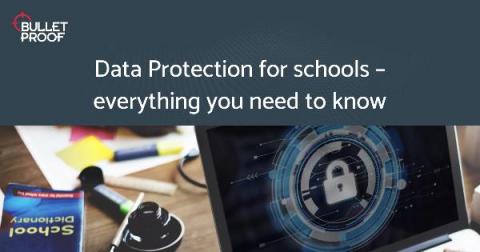Security | Threat Detection | Cyberattacks | DevSecOps | Compliance
%term
Focus on Fixing, Not Just Finding, Vulnerabilities
When investing in an application security (AppSec) program, you expect to see a return on your investment. But in order to recognize a return, your organization needs to determine what success looks like and find a way to measure and prove that the program is meeting your definition of success.
How CISOs Can Foster Effective Comms and Build a Cybersecurity Program
For many organizations, security flows from the top down. That’s a problem when executives don’t emphasize security as much as they should. Cisco learned as much in its CISO Benchmark Study “Securing What’s Now and What’s Next20 Cybersecurity Considerations for 2020.” Here are just some of the findings from Cisco’s study: The reason for these findings wasn’t immediately apparent from Cisco’s study.
2020 Data Governance Trends Report: New Risks, New Rewards of Remote Work
In August 2020, Egnyte partnered with Wakefield Research to survey 400 C-Level IT executives from across the U.S.* to understand how the remote work revolution is changing their governance strategies, and what they’re doing to get ahead of this sea change.
The Definitive Guide to Travel APIs
Cutting-edge applications in the travel industry heavily rely on third-party APIs and web services. Take TripActions: the corporate travel management software connects to the United Airlines API, the Southwest Airlines API, and the Lufthansa Group API to import their content like flight schedules and fares. Likewise, it connects to human resources APIs (Namely, BambooHR), finance APIs (Expensify, Spendesk), travel services APIs (VisaHQ, Stasher), and more.
Understanding Ecommerce APIs
If you work in the ecommerce industry, you know that every part of its value chain has been eaten by software: from product sourcing, inventory management, warehousing, online shopping, marketing operations, order management, payment processing, shipping, up to tax management. Today’s state-of-the-art ecommerce software is connected to countless other services. How? Through APIs. Take a random online store using Shopify, which empowers over 1,000,000 merchants in 175 countries.
Making SIEM Use Cases
While threats continue to evolve every day, modern-day businesses cannot remain in oblivion and wait for the attackers to exploit a vulnerability or disrupt their business operations. Logsign experts recommend that businesses should be proactive while dealing with their cybersecurity. As a proactive measure, many of our clients have implemented Logsign SIEM solution to get a single-point view of their organization’s security posture.
Stop Wasting Your Time and Money with a "Checkbox" SCM Solution
By now, we know a lot about secure configuration management (SCM). We know the way it works, the integral processes of which it consists, the areas of your IT infrastructure that it can help secure as well as the different types of best practice frameworks and regulatory compliance standards with which it can help you to maintain compliance. All we’re missing is how to procure and deploy an effective SCM solution.
Everything you need to know about DPO for schools
As legislation goes, the GDPR could be unique in its insistence that a new professional role, the Data Protection Officer (DPO), be created to ensure its mandates are properly met. But getting a DPO in place is no simple recruitment exercise, and that’s especially true for schools. For starters, people with the requisite mix of abilities and experience to do the job in educational environments are hard to find.









